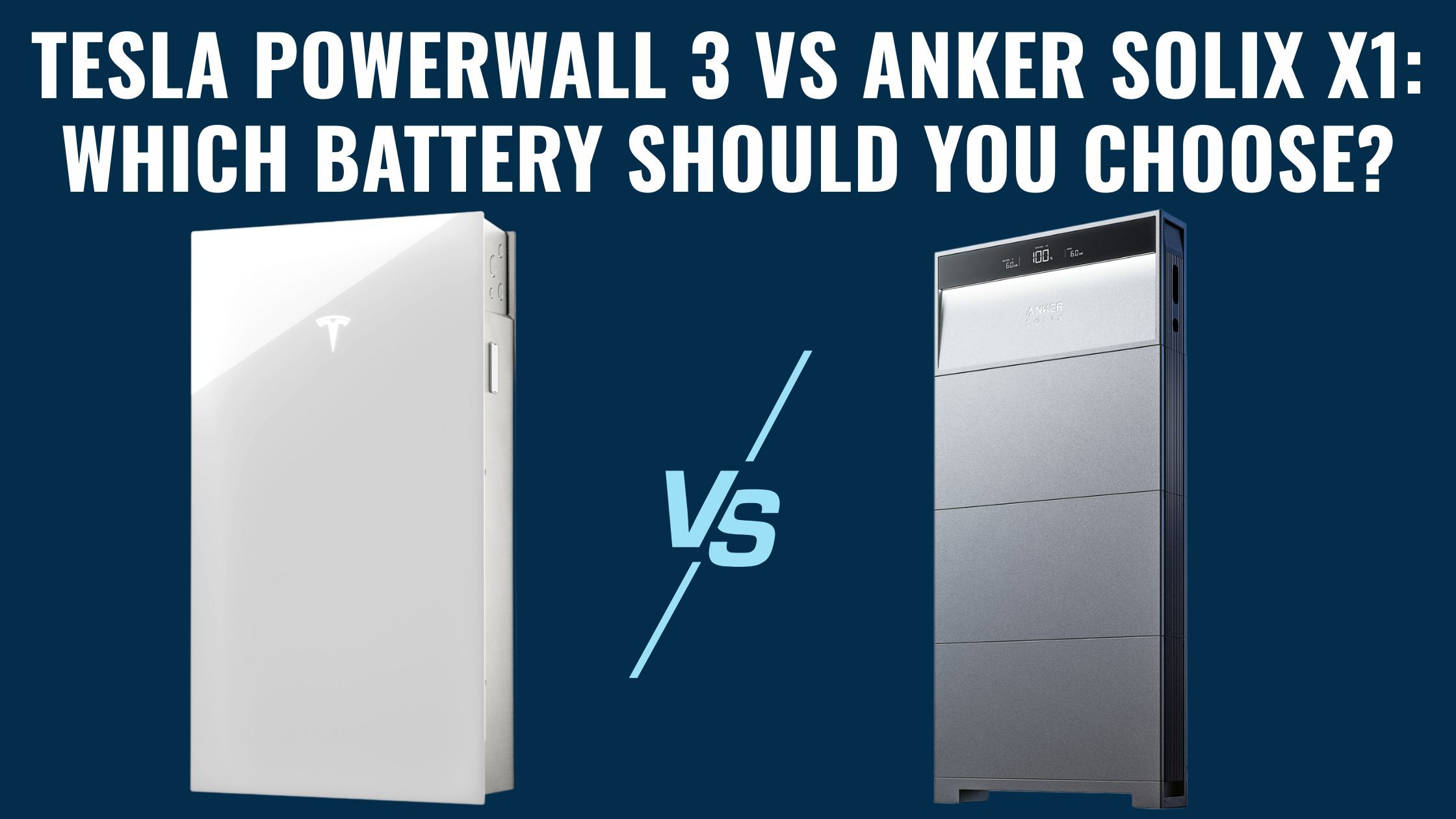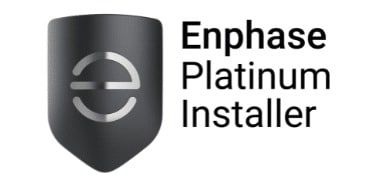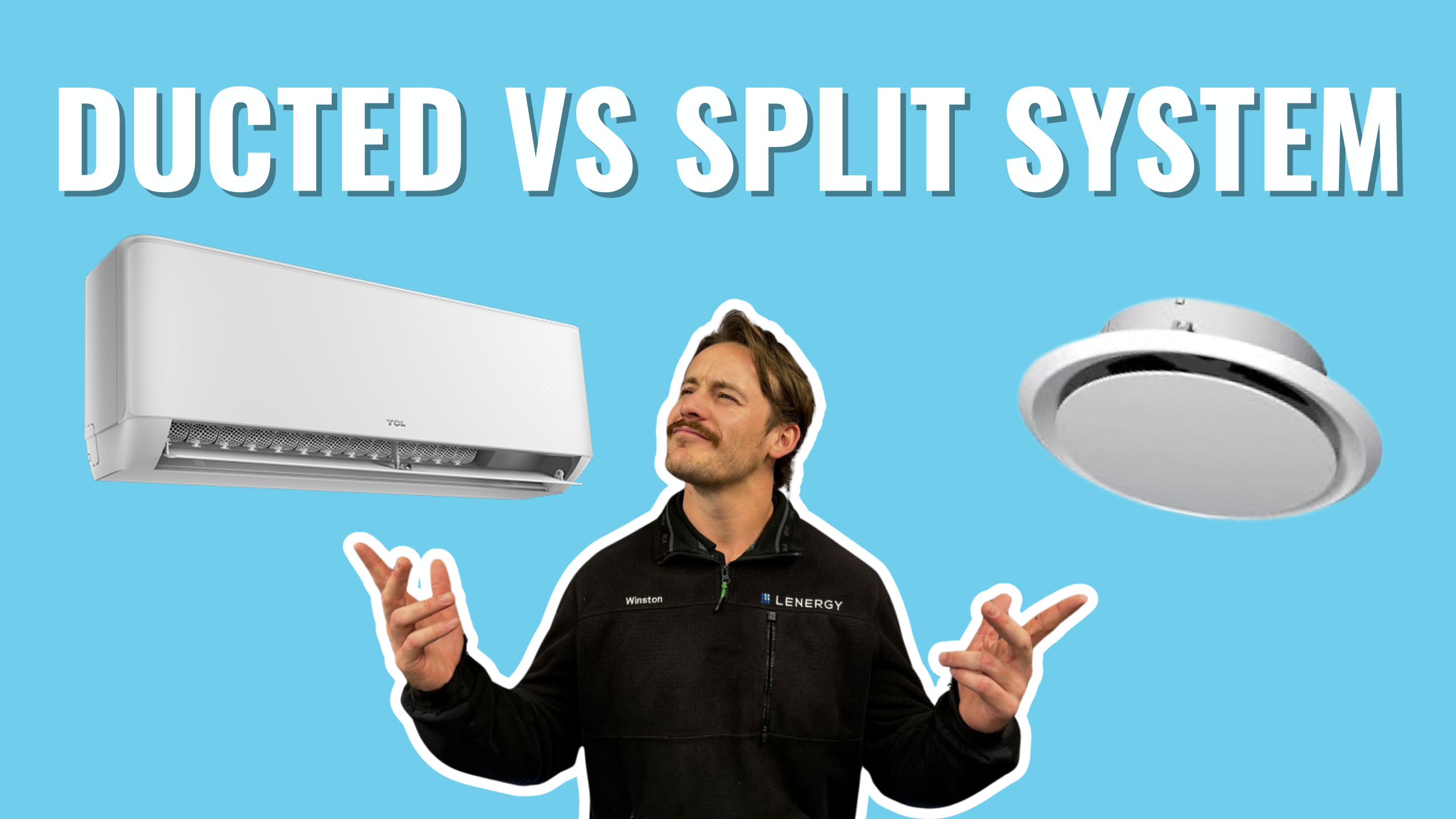
Written by Donna Wentworth
Last Updated: August 28, 2025
Ducted vs Split Systems: Which Is Right For You?
Feeling confused by the wide range of air conditioning options available? You’re not alone. As the seasons change and comfort in your home becomes a priority, selecting the right air conditioning system can feel overwhelming. You might be asking yourself, “Should I opt for a ducted system or a split system?” Each has its own benefits and limitations, so understanding which one suits your needs is essential.
We are experts in HVAC solutions at Lenergy, and we understand how crucial it is to make an informed decision. This guide compares ducted and split systems to help you determine the best fit for your home, budget, and comfort needs.
By the end, you’ll have a clear understanding of both systems, including costs, installation processes, energy efficiency, and maintenance requirements.
What is a Ducted Air Conditioning System?
A ducted air conditioning system offers a comprehensive solution for heating and cooling your entire home. It features a central unit usually positioned outside your property. This unit distributes cooled or heated air through a network of hidden ducts installed in your ceilings or walls, releasing air into each room via strategically placed vents.
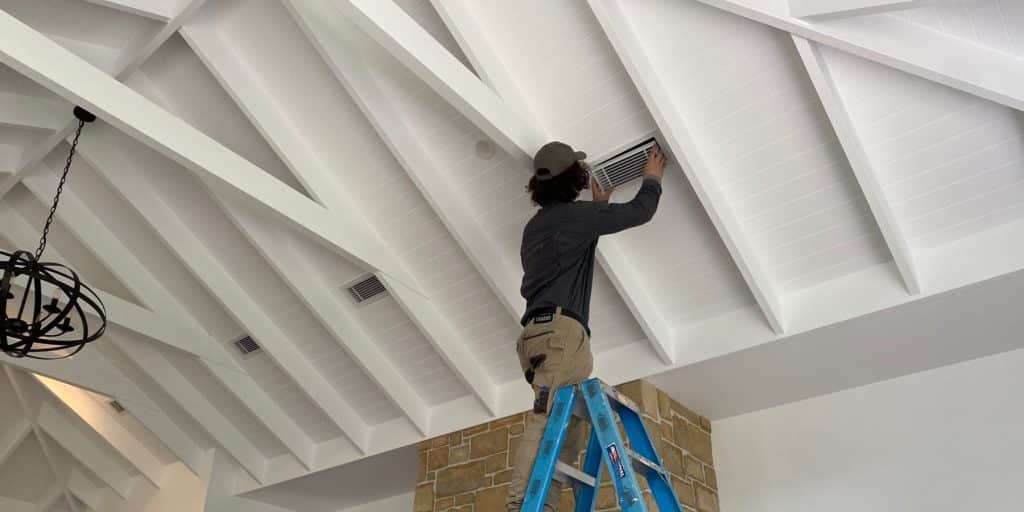
What is a Split System Air Conditioner?
A split system is a popular choice for addressing specific rooms or small areas. The system is divided into two main parts: an indoor unit mounted on a wall, which delivers air directly into a room, and an outdoor unit housing the compressor and condenser. This makes split systems particularly suitable for single-room cooling or heating.

Pros and Cons of Ducted Systems
Pros:
- Whole-Home Comfort: Designed to maintain consistent temperatures across your entire house.
- Discreet Design: Hidden within ceilings or walls, only vents are visible, blending seamlessly into your décor. Custom vents can enhance aesthetics.
- Zoning Control: Adjustable zones allow you to target specific areas, boosting both comfort and energy efficiency.
- Property Value: Installing ducted air conditioning can increase your home’s market appeal.
Cons:
- Higher Initial Investment: Ducted systems entail significant upfront costs, including the unit and necessary home modifications.
- Invasive Installation: The process may involve cutting into ceilings and walls, requiring professional installation and time.
- Space Limitations: Homes with inadequate roof or underfloor space—such as those with raked ceilings or custom designs—might not be suitable for ducted solutions.
Pros and Cons of Split Systems
Pros:
- Cost-Effective and Easy to Install: Generally cheaper with quicker, simpler installation, since extensive ductwork isn’t required.
- Targeted Cooling and Heating: Ideal for specific rooms, allowing for precise climate control where needed.
- Energy Savings: Heating or cooling only occupied rooms can lower electricity bills.
- Simpler Maintenance: Easier and less costly to service compared to ducted systems.
Cons:
- Limited Coverage: Best suited for a single room or small area; multiple units may be necessary for larger homes, increasing costs.
- Visual Impact: Indoor units mounted on walls can be intrusive aesthetically.
- Installation Distance: Installing outdoor units far from indoor units can increase costs; the most efficient setup is typically “back to back,” with indoor and outdoor units on the same wall.
Cost Comparison:
When choosing between ducted and split systems, understanding the cost implications is crucial. Let’s break down the initial and long-term costs associated with each option.
Ducted Systems:
- Purchase Price: Ducted systems are generally more expensive to buy. They cost $8,000 to $15,000 or more. The price depends on your home’s size and the installation’s complexity. (This price is including the installation)
Split Systems:
- Purchase Price: Split systems are more affordable, with single unit costs ranging from $1,200 to $3,500, depending on the unit’s capacity and features. (This price is including the installation)
Long-term Costs
Ducted Systems:
- Energy Consumption: Ducted systems can be more expensive to run, especially if the entire house is cooled or heated regularly. However, the use of zoning can help manage and reduce energy consumption.
- Maintenance: Regular maintenance is essential. It ensures the efficiency and longevity of the system. Annual maintenance costs can range from $308. At Lenergy we recommend the unit to be serviced once a year, or every 6 months if the system is constantly run.
Split Systems:
- Energy Consumption: Split systems can be more energy-efficient since you only heat or cool the rooms in use. This targeted heating and cooling can lead to lower electricity bills.
- Maintenance: Maintenance is simpler and cheaper for split systems. Annual servicing costs range from $198.00 per unit. We also recommend serving your split system yearly or every 6 months depending on usage.
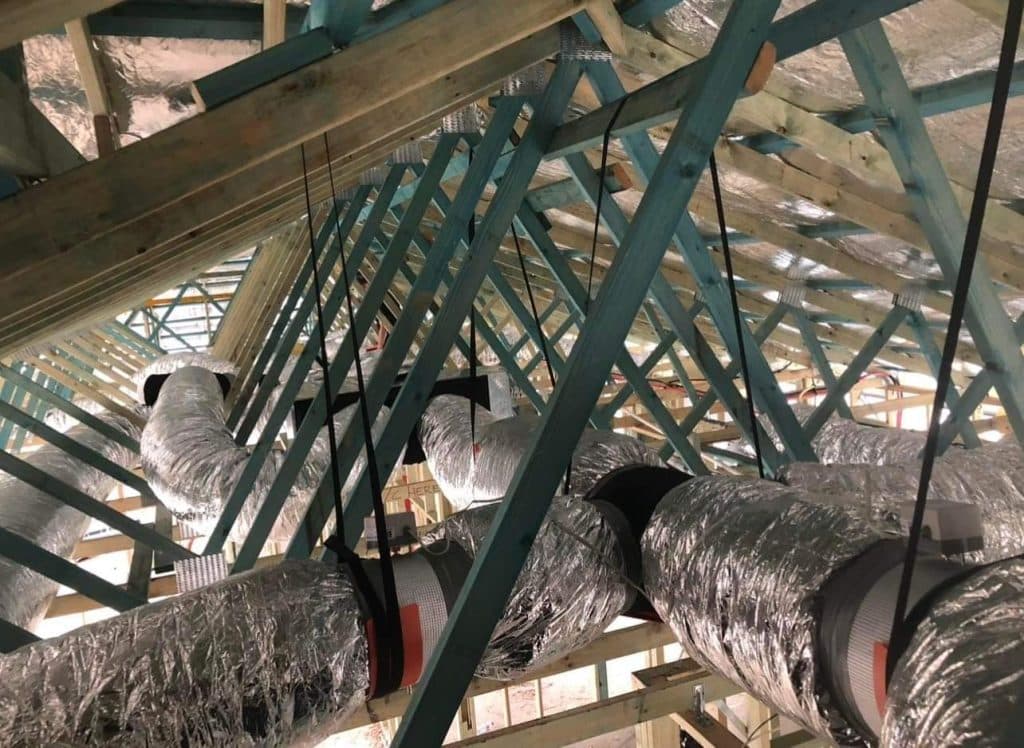
Installation Considerations
At Lenergy, we understand that choosing the right air conditioning system involves more than just the initial investment. Installation complexity, duration, and potential disruptions to your home life are important factors to consider.
Ducted Systems:
- Complexity: Installing a ducted system is a significant project that often requires modifications to your home, such as cutting into ceilings or walls to install ducts and vents.
- Timeframe: The installation process can take several days, depending on your home’s size and the system’s complexity.
- Professional Installation: Given the intricacies involved, professional installers from Lenergy are essential to ensure your ducted system is correctly installed and optimised for maximum efficiency.
Split Systems:
- Simplicity: Split systems are quicker and easier to install because they don’t require ductwork. They connect through a refrigerant line between the indoor and outdoor units, involving minimal alterations to your home.
- Timeframe: Installation typically takes a few hours to a day per unit, causing minimal disturbance to your daily routine.
- Professional Installation: While simpler, it’s still recommended to have experts from Lenergy handle the installation to ensure your system operates efficiently and effectively.
If you’re considering upgrading your home’s comfort, contact Lenergy for professional installation tailored to your specific needs!
Energy Efficiency and Environmental Impact
Choosing an energy-efficient AC cuts your bills. It also reduces your environmental impact. Let’s compare the energy efficiency and environmental impact of ducted and split systems.
Ducted Systems:
- Whole-home Heating and Cooling: Ducted systems are designed to cool or heat multiple rooms or an entire home simultaneously. This can be less efficient if you only need to heat or cool a few rooms, leading to higher energy consumption.
- Zoning: Modern ducted systems come with zoning capabilities, allowing you to cool or heat specific areas of your home. Proper use of zoning can significantly improve energy efficiency by reducing unnecessary usage.
- Energy Star Ratings: Look for ducted systems with high Energy Star ratings, as these are designed to be more efficient and environmentally friendly.
- Refrigerants: Modern ducted systems use environmentally friendly refrigerants, like R23, which have a lower global warming potential (GWP) compared to older systems
Split Systems:
- Targeted Heating and Cooling: Split systems are more energy-efficient for small spaces or single rooms. You only heat or cool the areas in use. This targeted heating and cooling can result in significant energy savings.
- Inverter Technology: Many split systems come with inverter technology, which adjusts the compressor speed to maintain a consistent temperature, enhancing efficiency and reducing energy use.
- Energy Star Ratings: High Energy Star-rated split systems are available. They ensure you choose a unit that is efficient and has low environmental impact.
- Refrigerants: Similar to ducted systems, many split systems use eco-friendly refrigerants with lower global warming potential (GWP), most commonly R32.


Ducted or Split System, We’ve Got You Covered.
The key takeaway from this is identifying which system best suits your space and budget.
Think about where you spend the most time in your home. Is maintaining uniform temperatures across your entire house more important, or is targeted cooling or heating in specific areas, like the living room, sufficient?
Once you’ve made your choice between a ducted or split system, let the experts at Lenergy handle the installation. We’ll ensure your home remains consistently comfortable all year round. Contact us today for your free quote!

